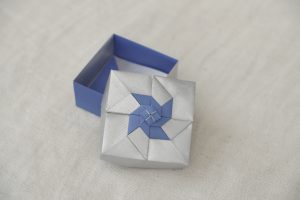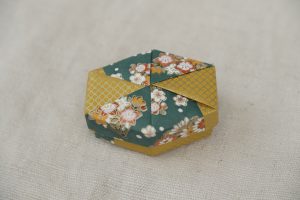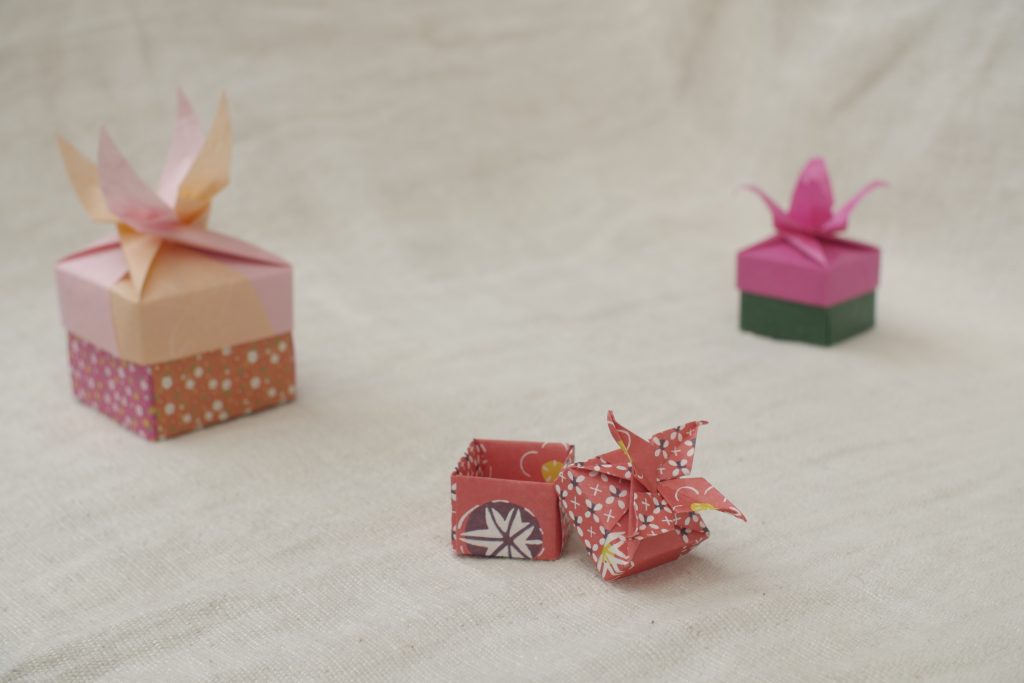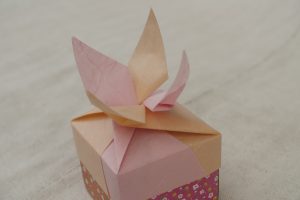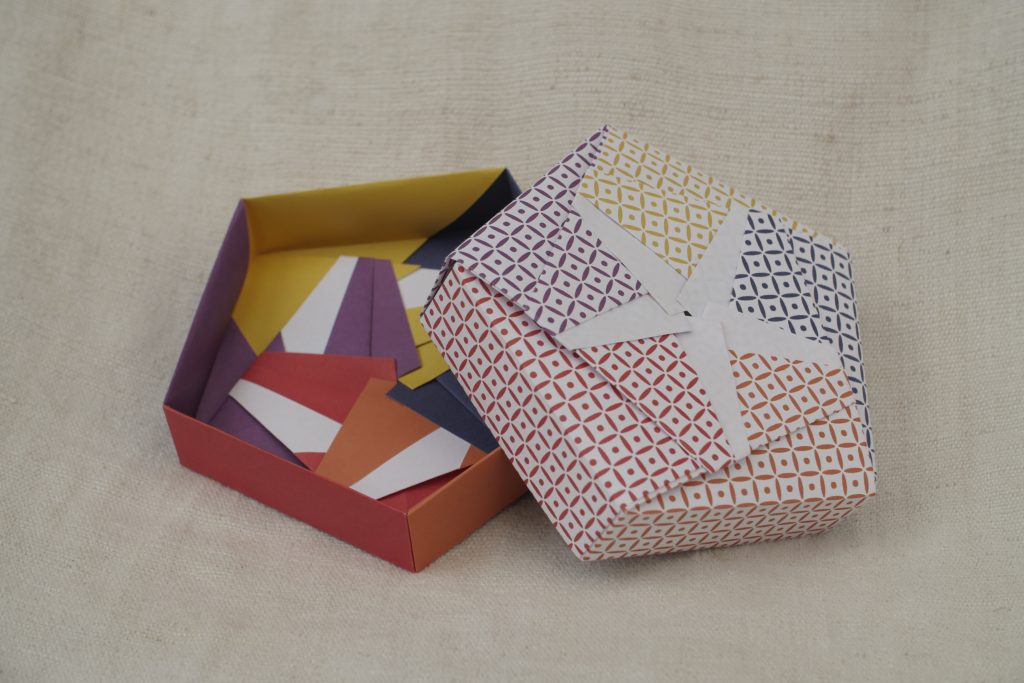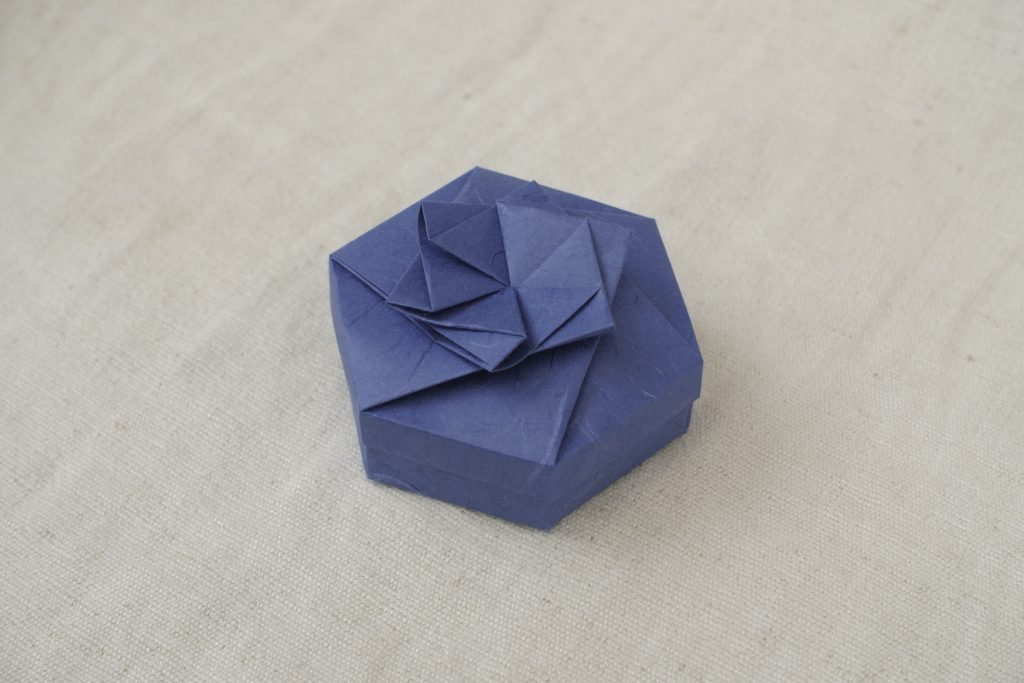Those two very different models can be found in “Origami” by Paulo Mulathino, ISBN 0785802622 (Chartwell books inc).It is a book full of simple but cute designs.
Cube folded from 6 sheets of 7 cm Senbazuru chiyogami (Grimmhobby). Pipe folded from 20 cm Heyda paper.
It may not be very visible from the photo, but the pipe (page 26) is actually 3-D and really realistic.
I saw the cube model (page 72) and immediately wanted to fold it ; halfway through, I checked the author, and was not surprised to see it was Tomoko Fusè. This is a very simple and elegant model, as always :)







